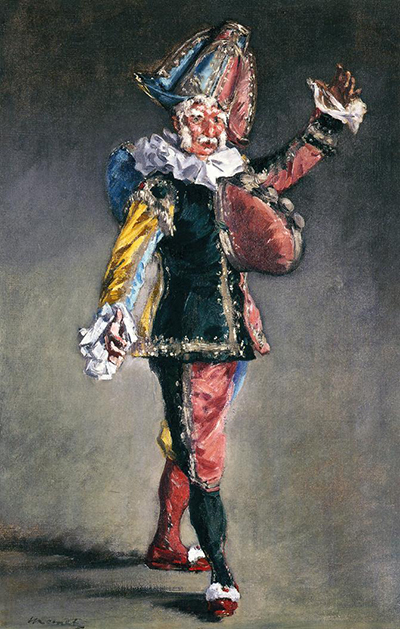Edouard Manet is considered to be one of the most prolific French painters of the 19th century. Born in 1832, he enjoyed a career that endured until his untimely death at the age of only 51.
However, it was during this time that he created some truly immortal paintings that continue to define Impressionism and Realism to the present day. One of his most notable works was Polichinelle (1871). While arguably not as recognised as other paintings such as The Railway or The Cafe Concert, there is no doubt that Polichinelle had a dramatic impact upon his contemporaries as well as artists well into the future.
A Departure from the Traditional Style of the Time
Manet was one of many artists who abstained from adopting the accepted and approved styles of his time. He rarely painted religious motifs and instead, he embraced what can only be called a rather gritty interpretation of the world around him. This approach can clearly be seen in many of his works and Polichinelle is a prime example of this exodus from the idealised depictions typical of the early Victorian age.
A Strange Melange of Emotions
Polichinelle can literally be translated into English as The Punch. This painting is said to depict a hunchback with a proclivity for violence. Other emotions which can be observed in this work include vulgarity, self-deprecation and an overall denial of the status quo of the time. However, it is also interesting to note that Manet employed a certain level of comedic exaggeration to depict this male "nymph"; almost as if to mock its true intentions. This can be observed in his rather sparse use of colour as well as by the simple fact that the image itself appears to be incomplete.
It can also be argued that Manet was making a silent political statement against the grandiose ideals that leaders of the latter half of the 19th century often embraced. This would be ironically confirmed with the pageantry of these icons and their associated gaudy personas that would eventually precipitate the First World War.
The Figure and the his Portrayal
It is quite interesting to note how the Polichinelle is holding his scabbard towards the floor and appears to be in the midst of a tirade. All of these mannerisms smack of the bellicose nature of personalities such as Wilhelm II (Germany) and one must wonder if Manet was attempting to convey his disdain for such leaders.




